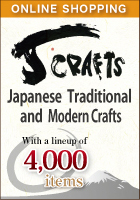Kamakura Private Day Tour With Hotel Pick-up (WK01)
The ancient city of Kamakura, surrounded by hills and a long beach, is one of the Japan's most beautiful cities. In Kamakura, traditional culture such as Zen Buddhism and tea ceremony is in harmony with modern one like fashionable cafes and sweets. Why don't you visit historic sites dotting the city and enjoy the beautiful townscape the national trust has protected, with a well-informed tour guide in this area?
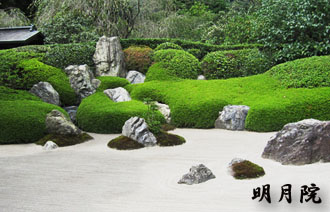
Program Fee
(Per Group in Japanese yen)
| Number of Participants |
1 |
2 |
3 |
4 |
Over 5people *1 |
Child (6-11) |
| 6 and a half hours | 28,000 |
36,000 |
48,000 |
60,000 |
+12,000 |
10,000 |
*1: each additional person
*The tour price includes the guide fee, transportation fee, temple admission fee and a drink at a cafe. (the cost of lunch is not included)
(English guides are always available. Please contact us if you need French or Spanish guides)
for Details of Application Procedure
Tour Schedule
Pick up at your hotel
You'll visit 4 or 5 places from......Engakuji Temple / Meigetsu-in Temple / Tokeiji Temple / Hokokuji Temple / Jomyoji Temple / Tsurugaoka Hachimangu Shrine
End of tour at Kamakura Station
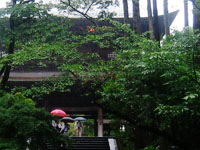
Engakuji Temple

Tokeiji Temple
Tour Point (Stars: See the Michelin Green Guide book)
Engakuji Temple
Engakuji Temple is ranked 2nd in the Five Great Zen Temples in Kamakura. The buildings stand in a straight line from Somon (the Main Gate) to the innermost building. This is the typical Zen style. O-gane (Great Bell) is designated as a national treasure. After visiting Butsuden (the Buddhist Sanctum) which houses the principal image, you can enjoy the views from Ryoan-in (one of the subordinate temples) on the top of the hill, and the beautiful front garden of the Hojo (the chief priest's residence). Zen spirit with 800 years' history has healed people who practice Zen at the training hall near the national treasure called Shari-den (the Reliquary Hall).
Meigetsu-in Temple
Meigetsu-in is known as a flower temple. Through the round window of the Main Hall, the dry landscape garden can be seen. The circle like a full-moon is said to represent the state of enlightenment. A dry landscape garden, mainly composed of rocks and white sand, was created as a Zen training place. The soothing sound of dripping water in Tsurube-No-I (one of the Ten Wells in Kamakura) and flowers adorned every here and there in the precincts make you feel the beauty of Japan.
Tokeiji Temple
In the Edo Period, a wife could not divorce her husband without permission of the husband himself. Once such women in trouble ran into this temple, however, they were entitled to a divorce by the law of the temple. Tokeiji was the only convent granted the authority by the Shogunate. Its treasure museum includes the material concerning marriage which tells us about such women's sorrow and pain, Makie lacquer works, pictures, calligraphy and ancient documents. You can also appreciate "Suigetsu (water moon) Kannon" said to be the most beautiful Kannon statue in Kamakura.
Hokokuji Temple
Hokokuji is known as "Bamboo Temple". About 2,000 straight and tall bamboos rise heavenward, and sunlight gets into them. In the bamboo garden, only the sound of streams and rustling leaves break the silence. This makes you feel like being in another world far from busy urban life.
Jomyoji Temple
Jomyoji is ranked 5th in the Five Great Zen Temples in Kamakura. In the tea room called "Kisen-an", you can be relaxed with drinking matcha (powdered green tea). You can also enjoy appreciating the dry landscape garden where rocks and well-trimmed trees are set out superbly. Japanese sweets complement the flavor of the tea.
Tsurugaoka Hachimangu Shrine
This great shrine founded by the Kamakura Shogunate and also respected by the Tokugawa Shogunate was the center of "Bushido" (the spirit of the samurai). Walking along the flag stones from the massive torii gate, the vermilion Maiden (the Ritual Dance Stage) with a heartbreaking story comes into view up ahead. Up on the sixty stone steps stands Honden (the Main Hall) donated by a Shogun. This place commands a view of Kamakura City. In Hakko-do (a craft shop) at the entrance of the shrine, you can enjoy elaborate Kamakura-bori crafts (wooden artifacts carved in relief repeatedly lacquered in black and vermilion).
Application Procedure
Please make a reservation by 2 days before the tour date. Please send the following information to IJCEE at info@ijcee.com.
for Details of Application Procedure
Notes
*Our guide will pick you up at your hotel in Tokyo (around the Yamanote Line and Odaiba areas) and Yokohama. Additional fare may be required if your hotel is located in the distant area.
*The maximum number of participants is 4 for 1 group. If the participants are more than 4, another guide is added.
*The morning or the afternoon course can be changed to the Great Buddha (★★) and Hase Temple (★) course.
*Please wear the proper clothing and shoes for walking.
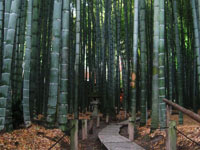
Hokokuji Temple
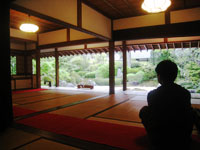
Jomyoji Temple

Tsurugaoka Hachimangu Shrine
Cancellation Charge (Cancellation Policy)
If you cancel your reservation, the following cancellation rates and remittance charge will be charged.
(1) 14 days - 3 days prior to the program date: 20 % of the program fee
(2) 2 days of the day before the program date: 50 % of the program fee
(3) a day before the program date: 100 % of the program fee





